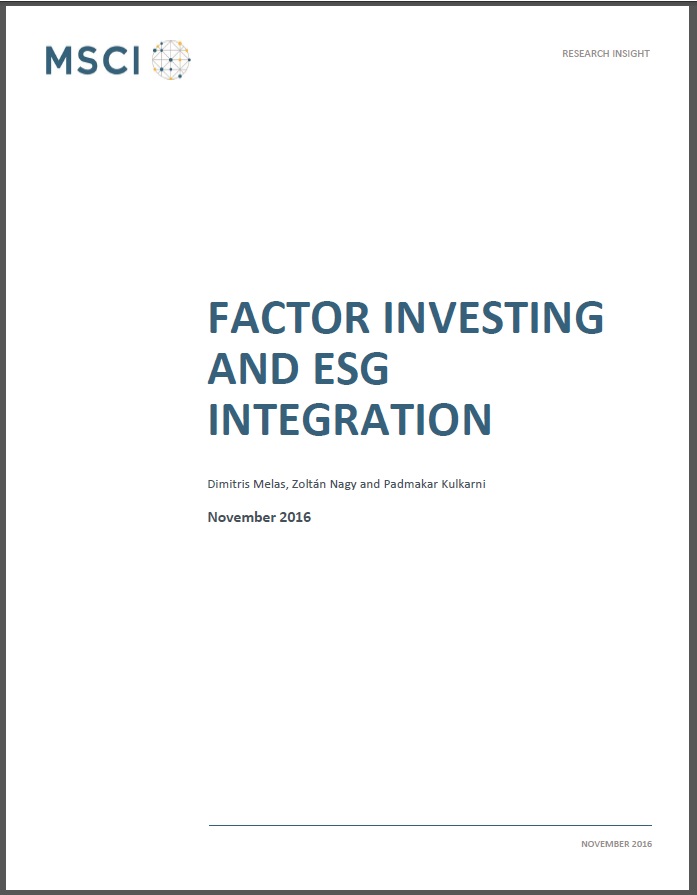Factor investing and ESG integration
EXECUTIVE SUMMARY
Over the past decade, many long-term institutional investors have incorporated Environmental, Social and Governance (ESG) considerations into their portfolios, by creating segregated ESG mandates or by incorporating ESG criteria across the entire portfolio.
Adding ESG criteria into long-term portfolios raises some important questions:
• What is the impact of ESG on portfolio performance and characteristics?
• How does it alter the risk profile and the factor exposures of portfolios?
• How does it affect investors’ ability to pursue their investment strategy?
To answer these questions, we first analyzed the relationship between ESG characteristics and traditional risk factors. We found that ESG scores had positive correlations with size, quality and low volatility. Then we assessed the impact of ESG integration on different investment strategies through a consistent portfolio construction framework. Our results show that integrating ESG criteria into passive strategies generally improved risk-adjusted performance over the period 2007 to 2016 and tilted the portfolio towards higher quality and lower volatility securities.
When we integrated ESG into factor strategies, we found that significant improvements in the ESG profile of these strategies was achieved with relatively modest impacts on target factor exposure. However, not all strategies were affected to the same extent. In particular, minimum volatility strategies experienced only a 7% reduction in target factor exposure for a 30% enhancement in their ESG rating. On the other hand, value strategies incurred a 22% reduction in target factor exposure for a similar 30% improvement in their ESG characteristics.
This analysis has implications for passive investing, factor investing (“smart beta”) and active portfolio management. Our results suggest that passive investors would have been able to improve the ESG characteristics of their strategies without a negative impact on their ability to capture market returns efficiently. Defensively oriented factor strategies (where ESG had positive correlation with the target factors), such as high quality and low volatility, could have increased their ESG ratings without impairing their ability to pursue their primary investment objective. Even dynamic, strategies such as those based on the value and momentum factors, could have enhanced their ESG profile with only a relatively modest impact on target factor exposures and ex-ante information ratios.
To download the full report, please click here.

